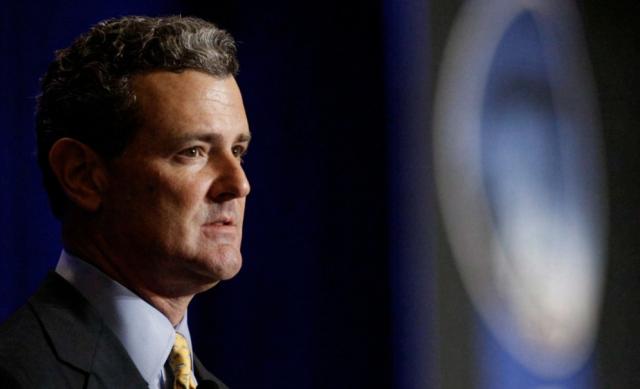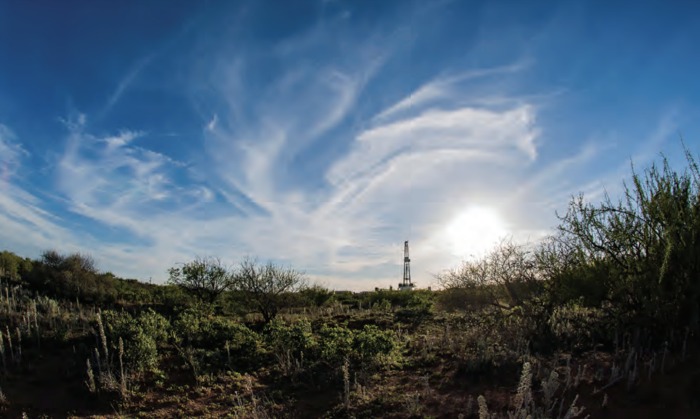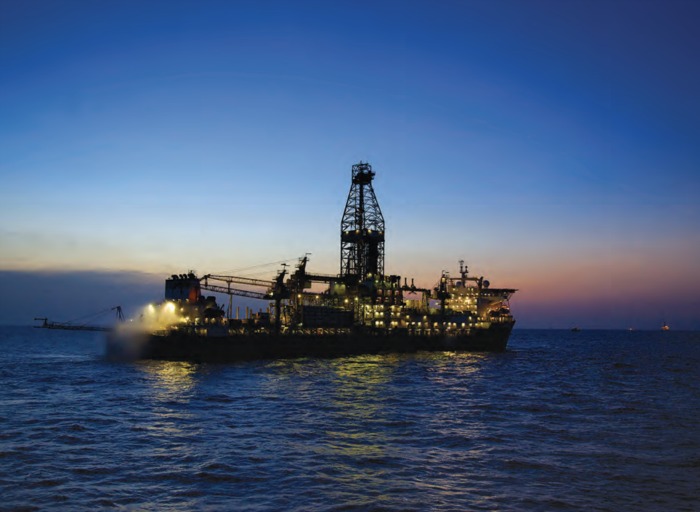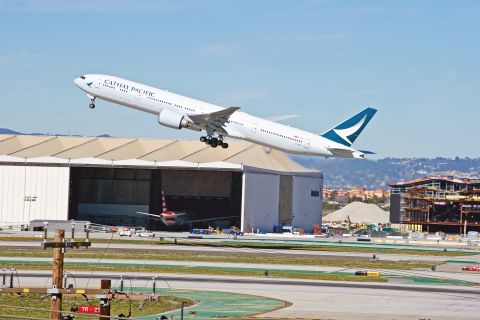
Anadarko Petroleum chairman and CEO, Al Walker, remains optimistic about the industry and the company, yet advises to be prepared for continued volatility.
[Editor's note: A version of this story appears in the March 2019 edition of Oil and Gas Investor. Subscribe to the magazine here.]
As head of one of the largest and most successful independents in the U.S., Anadarko Petroleum Corp. chairman and CEO Al Walker has led the pivot most independents are now making: to focus on shareholder returns as much as production growth.
To meet that goal, in 2018 the company bought back stock, reduced debt and increased its dividend from 5 cents to 30 cents per share, ending the year with $1.3 billion of cash on hand. Walker has vowed to continue to improve per-barrel margins and lower the free cash flow, breakeven oil price the company needs. In the fourth-quarter conference call in February, Walker reiterated that Anadarko Petroleum will use $50 oil in planning and moreover, all the company’s main assets except the Delaware Basin are free-cash-flow positive at $50—and the Delaware will be in 2020.
The 2019 budget midpoint is $4.5 billion, equal to the 2018 spend. In the Delaware Basin this year, Anadarko will operate 10 rigs and turn to sales 150 operated wells. In the Denver-Julesburg Basin, it will operate four rigs and turn 250 operated wells to sales. In the Gulf of Mexico, one or two drillships and two platform rigs will work, and the company will bring 10 deepwater wells to sales. Walker also said, “The Powder River Basin is a coming attraction.” In the first half of 2019, Anadarko is expected to take a final investment decision (FID) on its Mozambique LNG export facility, for which it has already announced several contracts with Asian buyers.
Walker, a distinguished alumnus of the University of Tulsa and a former investment banker, joined Anadarko in 2005 as CFO, later serving as president and COO before becoming chairman and CEO.
In January, about three weeks before releasing 2018 results, he spoke on a wide range of topics at the Houston Producer’s Forum. He emphasized these opinions are his own and not necessarily the official position of the corporation. However, we provide a summary of some of his remarks on key topics of the day, providing a window into which trends he watches, and the thinking that lies behind decisions made in the corner office.
On The Macros
We’ve seen without a doubt unprecedented volatility. When you think back to 2014 around Thanksgiving when the world started changing for all of us … it seems like with each passing year, we find new ways to increase the volatility.
And more recently, we’ve seen that the Saudis actually made a huge, colossal mistake trying to sweep our industry off the table. Somehow they just didn’t do the math, that if you produce more volume at a lower price, the treasury gets less revenue. More recently OPEC-plus has stepped in from a supply standpoint … with the Saudis committing to a 900,000-barrel reduction in supply.
Most people seem to be concerned about global demand but since 1972, there’s been only a couple of years when it didn’t actually grow year-over-year. Most years it’s grown by a million barrels or more. I think these China trade issues will smooth out, and so I continue to believe we’ll have a very strong 1 million barrel a day (bbl/d) per annum increase in the demand function. But there is less investor interest in seeing growth from us. More on that later.
You hear a lot of people talking about it, but I don’t worry about plateauing oil demand. They say global demand is plateauing at 100 million to 110 million bbl/d and my reaction to that is, So what?
It declines at 6% to 8% a year, so we’ll still have to find 6 to 8 MMbl/d of oil, every year, to replace what we produce. We are not going out of business; we’re not going to be the next Kodak camera. I don’t believe electric vehicles will have enough drawdown on demand.
Unconventional (oil production) is basically the wedge and that’s kind of hard to find. We’re just not replacing that.
On Permian Growing Pains
For those of us involved in the Permian, what we’ve seen is nothing short of jaw-dropping, the increase in production, especially in what was not a halcyon period for oil prices. We’ve started to understand in ways I never imagined back in 2010 to 2011 what the Wolfcamp A could potentially become.
The emergence of the Permian, probably by the middle of the next decade, as the third-largest oil producing area in the world, would never have been on anyone’s radar screen during the collapse in financial markets in ’08 and ’09.
When people extrapolate from the Wolfcamp A alone and question the Permian’s real potential, that’s a big stacked pay and not all of it is oil, there is gas too. I’m not sure all the benches will be developed. Today, we have a 20% recovery factor in the Wolfcamp A and that might be optimistic. If we could get to 30% to 35% that’s a whole new oil field. That’s why you see Exxon (Mobil Corp.), Chevron (Corp.), all these majors moving in, because they know they can crack the code.
Out in Midland, we’ve stood up the Permian Strategic Partnership, chaired by Donnie Evans (former U.S. DOE Secretary Donald Evans) to address the problems. Donnie’s done a great job. We finally came public with it a few months ago. We have raised over $100 million in commitments from the industry to create a public-private ability to improve education, roads and health care.
We plan to address the very significant issues we see, not the least of which is housing—it’s one of the highest-rising cost environments in which you can put your people to work. We’ve seen, as an example, a two-bedroom apartment in Midland has gone from $1,100 a month to $2,000. There are restaurants that had to go out of business because they couldn’t get people to work in the kitchen.

pack for “next-gen” technology incorporating artificial
intelligence and machine learning. Here, Anadarko
operations in the Permian Basin.
(Source: Anadarko Petroleum Corp.)
We as an industry have not reduced our optimism about the Permian from a capital standpoint; it’s really about the human capital restraints. We all talk about all the pipes that have to be built, the rigs we need, all the gathering that has to be put in place … but one of the biggest issues is attracting enough teachers to the area and then, are they able to afford to live there.
Donnie’s been successful in getting some federal money, and we’ve met with the governor (Texas Gov. Greg Abbott) several times and he’s come around and understood the need as well, and we’ve gotten some separate funding for energy roads.
This was not to create new money, but to have money already set aside move to the top of the queue for infrastructure financing in the Permian. So I’m optimistic, but the huge and rapid expansion of the Permian has come with some serious growing pains.
Natural Gas And LNG
Another thing we’re very close to is LNG. They said the LNG business was dead and now it is not dead. Most people would say that from here to 2030 it (demand) will double and from here to 2050, it could double again.
LNG is becoming a weapon not just for our industry, but really, for our government. It can displace Russian natural gas in Europe … I think you will see our administration continue to support it for domestic use, as well as exports.
The tremendous gas supply that’s coming, it’s almost stunning. In many ways, gas is just a byproduct of trying to get all these liquids out; it wouldn’t have been on the horizon 10 years ago.
While I think LNG can be a conduit, that comes with such a big price tag and it doesn’t move quickly. If you’re successful in making a final investment decision, it still takes you four years from FID to first shipment and billions of dollars. In Mozambique we anticipate taking FID on two trains, and we’re looking at $20 billion for the first two, so that’s a big price of admission. But it’s almost easier to get your head around an LNG development (with prices set by a contract) than if you have a discovery in the Gulf of Mexico and have to decide if you’ll build a spar, when you don’t know what the price of oil will be when it finally comes online.
Natural gas is just never going to be valued as it should be at the wellhead; I just can’t see it. So as a company we sold all our gas assets back in 2015. We had looked at all the oil production that was going to be coming out of the Permian and all the gas with it ... Natural gas at the wellhead is never going to give you a better margin than oil on a boe (barrels of oil equivalent) basis. What would gas prices have to be to compete with $60 oil: $5 or $6 at the wellhead? And we don’t think we’ll see that again.
We just saw negative basis at Waha in December, and we’ll probably see that again from time to time because gas is a byproduct. The basis is slowing shifting from the Permian to the Gulf Coast as the pipelines are building.
Capital Markets And M&A
Another thing we’ve seen is an evolution in the way that public and private capital is formed. During the earlier part of this decade and the last, I think private equity went through a big expansion that was nothing short of remarkable in what it accomplished with many management teams, but I do think that’s starting to change a bit.
I think over 80% of our trades every day are done by black box algorithms based on the macros, so very few of us have long-only investors any more. These algorithms trade off macros.
As an industry, we got through a period where high IP flow rates caused the public markets to react in a certain way. But today, investors look at IRR for the integrateds and for the independents, we are still a cash-flow-based group—that is how investors look at us.
Alpha is an asset’s return compared to a risk-adjusted return, and beta is a measure of volatility and how an asset does against some benchmark. I look at the volatility and our beta is going up and our ability as a company to add alpha is not keeping up; in fact, it is flat to going down. That is hard to sustain.
What does that mean if you’re a private company or a private-equity-backed company and you’re looking at the traditional build it for three to five years and flip it? I think the halcyon period for the private-equity community may be over.
It’s come as no surprise that you see very few of us public companies buying properties or entire companies today like the recent Concho-RSP deal. I’m not sure there is any large public E&P company out there today who wants to buy any Tier 2 or Tier 3 acreage, and I’m not sure they’d pay cash to buy tier one either. So as bigger companies, we’re left with looking at acquisitions as the last thing we’d do.
I’ve asked the buyside and some institutional investors, why do you care if a deal is done at $70,000 an acre? If they’d paid cash, that would be a different answer. Both companies’ stock go down on the day of the announcement.
Since 2014 in the public market, M&A has been discouraged—you don’t see a whole lot being done. The best deal I saw last year was Concho and RSP coming together; I think that was a tremendous move for both of them, yet it took a while for the market to digest it and understand it. That’s the way it goes.
Political Barrels
Last year, we moved into the fall with strong fundamentals, and we thought we’d have $90 or $100 oil, only to have our president put sanctions on Iran. Then he gave eight countries an exemption from that, including China and India, and then he was asking the Saudis to overproduce going into the midterm elections.
Where we as a country do have some leverage is in terms of asking the Saudis to do some things, but I do worry between here and 2020 that the politically motivated barrel might continue. I have no idea what will happen in May when interim sanctions end. How Venezuela factors into that I don’t know. I do think we’re in a better price environment for oil. We just have to recognize the events that occurred this fall will continue between now and the 2020 election.

again by 2050, said Walker. Anadarko expects to FID
its Mozambique LNG project, supported by its
offshore Mozambique operations, show here.
(Source: Anadarko Petroleum Corp.)
So many things happen to our industry that we never see coming … One of our board members said it best: “Just when you think you’ve got it figured out, some new issue comes up” and then we’re saying, “Where did that one come from?” So I’m a little cautious.
We’ve seen lately, at least in the public market, less investor interest in growth. I think we’ve probably found that $40 or $50 is the floor but I’m not sure what the ceiling is, maybe $70. But at some point in the next decade, underinvestment is going to cause a problem.
On AI, Google And More
What lies ahead in the next decade? I can tell you that as a company, we’ve been making tremendous investments in technology. We put in place in 2014 a technology team to look at next-gen,” not improving current gen, but trying to develop next-gen through AI and machine learning. When I came into my current role in 2012, I started looking around at other industries, not so much for improving our current technology but looking at what other industries are doing. I started to realize just how far behind the curve our sector was.
At Anadarko, the board has talked a lot about this and so we brought in a person from the tech space—we’re probably the only E&P company with a millennial on our board. But he’s been not only very good in the board room, but very helpful in terms of how we set up our advanced analytics and emerging technology groups, and how we build out the systems to deliver that. We’ve centralized our R&D group.
It’s kind of like with plumbing, where you’re in trouble if you don’t have a big enough gauge, so you have to have a chief technology officer and a chief systems officer that can actually deliver what the technology people develop to the various verticals we manage.
We just went public with a joint venture with Google that we’ve been working on for a while.
I think someone’s going to take seismic from being an indicative tool to being a predictive tool— hopefully, Anadarko does it. That big discovery BP just made in the Gulf of Mexico was done by making a different algorithm. We have about 80 people committed in an arrangement with engineers, geologists, petrophysicists and others to figure out our new algorithms. About a third of them have PhDs in things like applied mathematics.
Now, why did we partner with Google? It knows nothing about oil and gas … but a lot of us have partnered with Silicon Valley firms before, like in our case, we use the Google cloud. Years ago we used the national labs to figure out technology questions; now we’re using algorithms.
I do think in years to come we’re going to see more regulation at the federal and state level and so, we’re going to have to absorb that cost in some way. We think technology will allow us to offset that by lowering costs in some way. Lowering that breakeven cost is very important.
Our industry is really rich in data, but it’s data-poor in how we can actually do something with it. We’ve got to figure out how to process it more efficiently … We know we’re going to be living in some sort of volatility so having lower costs will allow us to offset that.
The Future
If you think about the refining capacity at the Houston Ship Channel and Corpus Christi, and then the expectation that 5 or 6 million is coming out of the Permian, if we aren’t set up to ship that for export, you’re going to see LLS and GC look very different price than it is today.
How does the Port of Houston address this? Larger cargoes are coming in, and the pilots union has concerns about how they move these big ships and how petroleum products are being displaced by non-petroleum products in the Ship Channel. I think Enterprise will take a lead role on this. If we don’t solve it, a lot of the oil is going to get stuck there.
Can you imagine what the price of WTI would be today if we could not export? We’re going to have to solve this or there’ll be a huge basis differential we don’t have today as the Permian ramps up and potentially doubles.
Technology has room for a lot of improvement in ways we can’t know today. We’ll go into older fields and understand the recovery factor. All of us have technology groups but to move from the lab to the field, you’ve got to have a system. Whether you are Exxon or whomever, we’re all figuring out how our systems with deal with technology and develop the next gen. People are skipping generations. For our industry, the next decade will be very exciting.
I think our industry is alive and well and healthy; there is less regulation than two years ago. I think the next decade will be better than the last two years. Most of OPEC needs $80, if not $90, a barrel for operating costs and their social spending, and they are operating at a deficit today, so I think we have some good backdrop to all of this. I think the equilibrium in the next decade could be good.
I think $70 is the range we’re likely to operate in this year and next. I think if you can grow at 5% and return more cash to investors than if you grew at 10%, than you should. I think you should see slower growth.
So as we look out at 2019 to 2020, I think some of the same macro factors are in place, and the price volatility will continue. But I think the under-investment we’ve all heard about is going to come back in some form or fashion early in the next decade, probably just not in 2019 or ’20.
Leslie Haines can be reached at lhaines@hartenergy.com.
Recommended Reading
SAF End-users, Producers Talk Challenges, Solutions
2024-02-07 - The lower lifecycle emissions of sustainable aviation fuel are seen as a key lever for airlines to reduce carbon emissions, but cost is a challenge.

